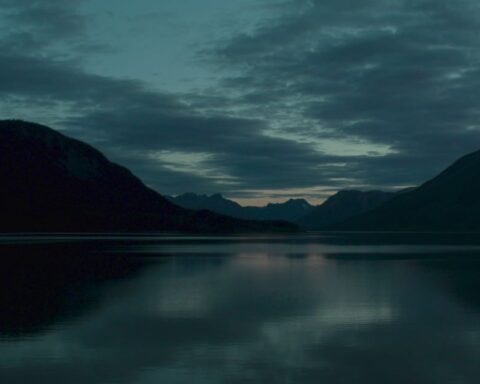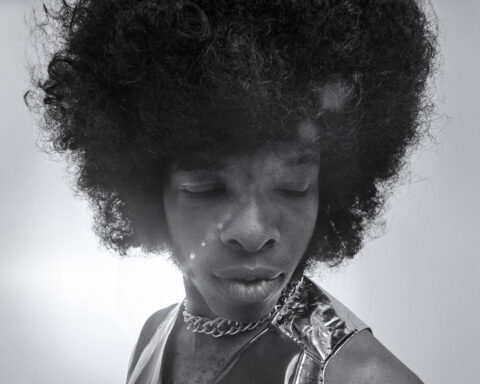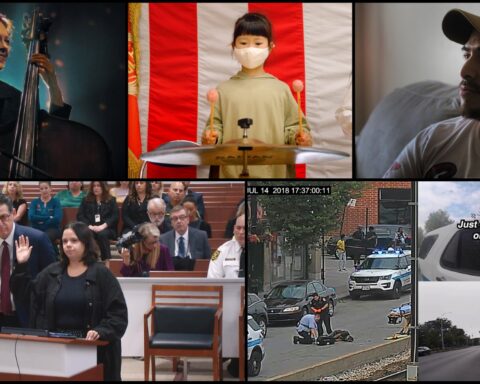Hale County This Morning, This Evening
(USA 76 min.)
Dir: RaMell Ross
Programme: International Feature Competition
ReMell Ross sums up his poetic meditation on black life in small town Alabama when we hear Billie Holiday singing over the end credits: “We lived our little drama/And stars fell on Alabama last night.” A large format photographer and basketball coach, Ross’s film is constructed entirely of mostly small dramas, and even mundane moments that are never explained, with heightened images of the sun, moon, and stars.
Whether the characters are pounding across a basketball court, jumping up and down, getting a painful nose-piercing, singing a cappella in a strip mall, or enduring a check-up in a doctor’s office, Ross continually makes you aware of the sky overhead and brilliant emanations of light. Clouds rush past in fast motion. A small boy shoots his arms up toward a spectacularly darkening sky. Refraction bursts across shots, some characters move in pixilation, as if reacting to otherworldly vibes, or in slow motion. The cosmos is part of the action.
Ross eschews standard doc vocabulary like establishing shots, explaining contexts, or building a storyline. He filmed for five years, capturing whatever caught his eye, and then pieced together the footage without regard to an overall formal structure. Thai filmmaker Apichatpong Weerasethakul, known for his dreamy, non-linear work was the film’s “creative advisor.”
An early church scene in Hale County This Morning, This Evening starts tight behind a girl as she plays with her hair. The film focuses on hands, bellies, and people’s backs. Ross cuts from extreme close-up to long shot without warning. In gyms, cars, parking lots, and living rooms, young people talk about their troubles and aspirations. One guy says he’s not thinking about tomorrow because he already had to deal with today’s dramas.
In one of the film’s longest scenes, a man on a porch plays a gorgeous blues, the scene’s length matched by one in which an adorable baby runs back and forth in her apartment. Ross picks up on explosions of energy all through the doc, sometimes a restless energy.
In a strange moment, we see a dream-like, ghostly image of what looks a man in black face emerging from the woods, seemingly headed toward a plantation house. It’s Caribbean Vaudeville comic Bert Williams in his 1913 comedy, Lime Kiln Club Field Day. A star, the light-skinned Williams darkened his face to please white audiences. The scene is like a moment out of Get Out. The plantation house looks ominous.
In his film, Ross refers to Selma, evoking centuries of black torment and defiance. (Maybe Bert Williams is hiding a machete.) Ross doesn’t mention the fact that James Agee and Walker Evans created their liberal-minded masterpiece, Let Us Now Praise Famous Men (1941), in Hale County, Alabama. Of all his legendary stills depicting sharecroppers, Evans didn’t photograph a single black face. Agee barely mentions blacks in his soaring prose. One can offer historical explanations. But.
In titles at the start of his film poem, Ross states a central there of Hale County This Morning, This Evening: “How we’ve come to be seen … what is the orbit of our dreaming?”
Visit the POV RIDM Hub for more coverage from this year’s festival.









